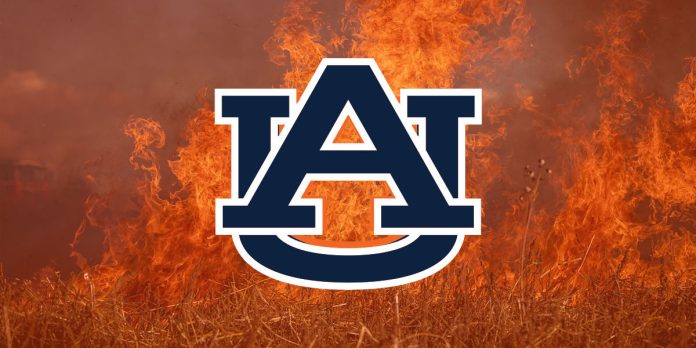AUBURN — As the California wildfires continue to rage and wreak havoc, citizens, landowners and forestry experts throughout the country are looking to learn from the situation. Auburn University’s Heather Alexander, the Dwain G. Luce Endowed Associate Professor of Forest Ecology in the College of Forestry, Wildlife and Environment, is an expert in forest flammability, fire ecology and forest ecology. She took time to discuss the fires and talk about the conditions and factors that lead to fires like those that are ravaging the Los Angeles area in this installment of Expert Answers.
What do you know about the California wildfires and what may have caused them?
HA: First, it’s important to understand the definition of wildfire. Wildfires are unplanned fires in vegetation and natural fuels caused by lightning or other natural causes (e.g., volcanoes), accidental or arson-caused human ignitions, or by escaped prescribed fires (planned fires ignited by land managers to meet specific management objectives). For any fire to occur, there must be three components: heat (ignition source), fuel and oxygen. Take any of these away, fire goes out. Supply more of any of these, fire keeps going.
Across the U.S., more fuel — in the form of dense live and dead vegetation — is a common problem due to decades of land mismanagement through fire suppression. Dense fuels are especially problematic in regions with a warm and dry climate, like southern California. Dry dead plant material decomposes slowly, promoting fuel buildup and dry fuels ignite easily. Climate warming is not helping the situation because air temperature is the primary driver of fuel moisture. Plus, fire seasons are longer, and in some regions, there are more lightning ignitions.
There are many potential ignition sources of the California wildfires, although the exact one has yet to be determined. There were no lightning storms in the area when the fires started, so the most likely cause is human-related. Sparks thrown from downed power lines, cars, tractors, unattended campfires, or cigarettes are common wildfire causes.
What types of conditions make wildfires more likely?
HA: Wildfires are more likely in areas with excessive dry fuels and abundant ignition sources. Being able to control wildfires once started becomes problematic when the terrain is steep, causing fires to spread quickly and complicating navigation by fire suppression crews. In these situations, water is often flown in and applied aerially to douse the fire, but in dry areas, water sources can be scarce. In regions like southern California, high winds also promote fast fire spread in an already complicated terrain, and fighting fires is made even more difficult by high housing density. Wildfires are especially problematic when they happen at the wildland-urban interface, such as the Los Angeles area, as many structures are embedded in highly flammable vegetation.
Do you know what the state of Alabama has done to guard against something like this?
HA: Many state, federal, and private agencies within Alabama and across the Southeastern U.S. use prescribed fire as a tool to reduce fuel loads and minimize the chance of wildfires. Prescribed fire is the intentional ignition of fires in natural vegetation and fuels under controlled conditions to meet specific objectives. Prescribed fires are well-planned and set under very specific weather conditions and with proper personnel and safety measures to avoid fire escapes, smoke issues or extreme burning of forest trees and other natural resources. Prescribed fires not only reduce fuels, but also serve many other important ecological functions, including increasing plant and animal biodiversity and reducing unwanted pests like ticks and chiggers. The Southeastern U.S. conducts more prescribed fires than any other region of the country (63% of the 9.4 million acres burned by prescription in 2020).
Perhaps measures like the Alabama Forestry Commission recently took may help?
HA: Restoring the process of fire disturbances through prescribed fires is critically important for reducing fuels and getting our natural ecosystems back to a place where they are no longer at major risk of catastrophic wildfires. The Alabama Prescribed Fire Act gives every landowner the right to use prescribed fire as a land management tool that “benefits public safety, environment, natural resources and economy.” This act acknowledges the many benefits of the controlled application of fire to naturally occurring vegetative fuels.
Given that approximately 90% of the state of Alabama is privately owned, prescribed burning by landowners is key to keeping fuels low, protecting their acreage and keeping many of the region’s fire-dependent ecosystems healthy. The Alabama Forestry Commission is the leader in promoting prescribed fire as one of the best ways to protect our forests across the state.
Are there things people can do to better protect their property against potential wildfires?
HA: Beyond conducting prescribed fires, another important way to prevent wildfires is to limit unintentional ignition sources by making sure to put out campfires and cigarettes and avoid producing sparks from machinery or automobiles. Homeowners can limit risks associated with wildfires by performing simple safety measures around their homes, which are described by the National Fire Protection Association.
Don’t miss out! Subscribe to our email newsletter to have all our smart stories delivered to your inbox.



